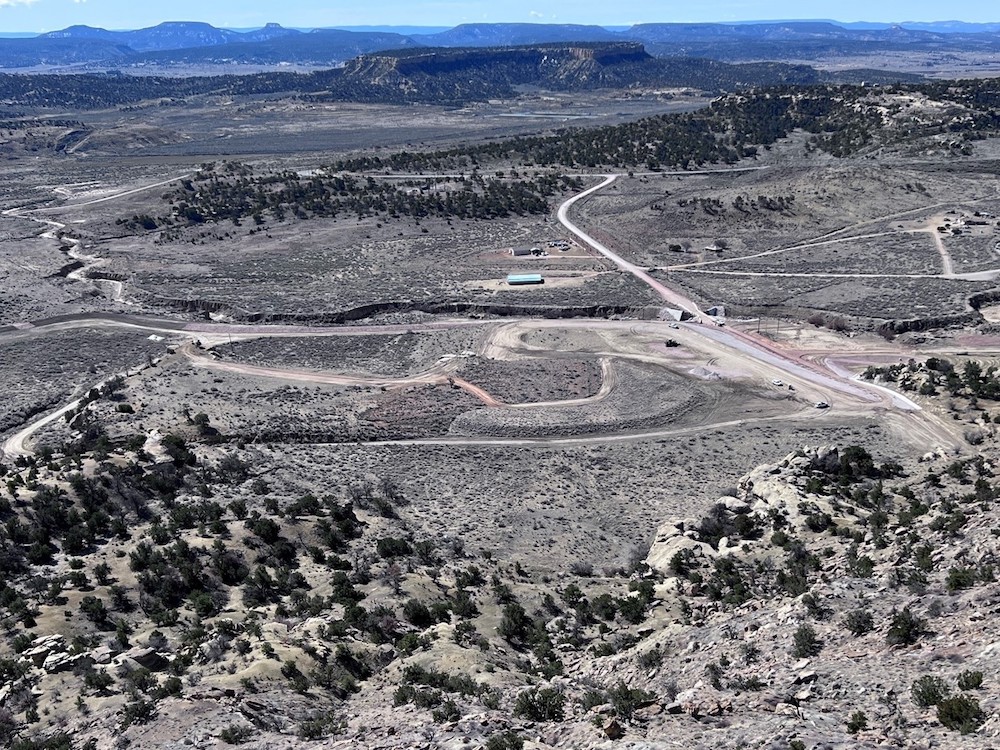
- Details
- By Neely Bardwell
The Environmental Protection Agency will move uranium mine waste from Churchrock, New Mexico to the Red Rock regional landfill where it can be safely stored forever.
The federal agency signed an action memo to transport radioactive waste at the Quivira Mining Co. Churchrock Mine to a disposal site at the Red Rock regional landfill about six miles east of the Village of Thoreau. The cleanup will begin in early 2025 and continue for 6-8 years.
For the Red Water Pond Road Community Association (RWPRCA), which has advocated for waste removal since 2006, the decision marks a significant shift in addressing uranium contamination on Navajo land.
“Removing the mine waste from our community will protect our health and finally put us back on a positive track to Hózhǫ (balance),” said Teracita Keyanna, RPWPRCA executive committee member. “I think this decision empowers grassroots organizations like ours and our allies to continue to advocate and educate to clean up hundreds of abandoned uranium mines that threaten our Diné communities every day."
RWPRCA President Edith Hood said the community has dealt with the impact of uranium mining since the late 1960s. Commercial mining began at the site under Kerr-McGee Corporation, which later became the Quivira Mining Company. The operation extracted an estimated 1.3 million tons of uranium ore before closing in 1986. The Navajo Nation currently has more than 520 documented abandoned mines, with no disposal facilities for uranium waste within 350 miles of tribal lands.
“Many of us suffer chronic health problems and a degraded homeland as a result,” Hood said. “We advocate for a regional approach to addressing remediation of nearly 100 abandoned uranium mines in the Eastern Navajo Agency. We are committed to making sure the removal of mine waste from our community does not threaten the health and safety of our Diné neighbors.”
Previous attempts to address the waste proved unsuccessful. In 2011 and 2013, the EPA and the Nuclear Regulatory Commission approved a plan to place 1 million cubic yards of waste from NECRM on top of the existing tailings pile located half a mile from RWPRC village. Effectively, neither of those wastes were removed from the communities.
The Red Rock Landfill currently handles municipal waste from McKinley and Cibola counties and Navajo Nation communities as far away as Tuba City. The planned uranium disposal cell will occupy a separate area of the 640-acre site adjacent to the shuttered Escalante power plant.
The Northwest New Mexico Regional Solid Waste Authority (NNMRSWA), which owns the landfill, must show that its operations can protect ground water, air and soil, while safeguarding public health for decades to come. The New Mexico Environment Department will oversee long-term monitoring of the site.
Chris Shuey, who has documented mining and milling impacts in the Churchrock area for 40 years as an environmental health specialist at Southwest Research and Information Center in Albuquerque, said relocating uranium waste is essential for tribal communities.
“Removing mine wastes from Navajo communities to engineered, regional disposal sites is a public health imperative,” Shuey said, noting that more than half of all Navajo chapters have at least one source of unhealthy uranium exposure. “The federal government must continue looking for suitable sites for long-term disposal of mine wastes to protect current and future Navajo populations.”
“This decision will remove over 1 million cubic yards of waste that has haunted the Red Water Pond Road and Pipeline Road communities for too long,” EPA Pacific Southwest Regional Administrator Martha Guzman said in a statement.
“This solution is a compromise that will get radioactive waste in this area off of the Navajo Nation as soon as possible,” Navajo Nation President Buu Nygren said in the EPA statement. “It’s not everything the three affected communities would wish for but it’s action in the right direction now rather than in the future. Most importantly, this will protect our people from harmful exposure.”
More Stories Like This
Trump signs law that revokes some limits on drilling in Alaska’s National Petroleum ReserveSouthern Sierra Miwuk Nation Gets 900-Acres ofLand Back
Chilkat Indian Village Tells New Palmer Mine Owners They Are “Not Welcome” in Chilkat Valley
Tribes, Coastal Group Ask Army Corps to Revoke Permit for Texas Export Terminal
Michigan Tribes Tell Supreme Court: Don’t Bail Out Enbridge
Help us defend tribal sovereignty.
At Native News Online, our mission is rooted in telling the stories that strengthen sovereignty and uplift Indigenous voices — not just at year’s end, but every single day.
Because of your generosity last year, we were able to keep our reporters on the ground in tribal communities, at national gatherings and in the halls of Congress — covering the issues that matter most to Indian Country: sovereignty, culture, education, health and economic opportunity.
That support sustained us through a tough year in 2025. Now, as we look to the year ahead, we need your help right now to ensure warrior journalism remains strong — reporting that defends tribal sovereignty, amplifies Native truth, and holds power accountable.
 The stakes couldn't be higher. Your support keeps Native voices heard, Native stories told and Native sovereignty defended.
The stakes couldn't be higher. Your support keeps Native voices heard, Native stories told and Native sovereignty defended.
Stand with Warrior Journalism today.
Levi Rickert (Potawatomi), Editor & Publisher

